
Wheat
We are a quality centric company, engaged in offering excellent quality Milling Wheat. Under utmost hygienic conditions, the offered wheat is processed by our vendors' qualified professionals using contemporary techniques. The provided wheat is used for beer and whiskey production. Our team of quality controller tests this wheat against variegated quality parameters to ensure its freshness at clients' end. Also, this wheat is packed with safe packaging material.Features: High nutritional value Long shelf life Rich taste
...more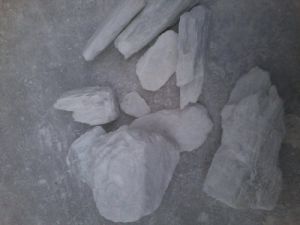
Talc Lumps
Most people are familiar with the mineral talc. It can be crushed into a white powder that is widely known as "talcum powder". This powder has the ability to absorb moisture, absorb oils, absorb odor, serve as a lubricant and produce an astringent effect with human skin. These properties make talcum powder an important ingredient in many baby powders, foot powders, first aid powders and a variety of cosmetics.A form of talc known as "soapstone" is also widely known. This soft rock is easily carved and has been used to make ornamental and practical objects for thousands of years. It has been used to make sculptures, bowls, counter tops, sinks, hearths, pipe bowls and many other objects.Although talcum powder and soapstone are two of the more visible uses of talc they account for a very small fraction of talc consumption. Its hidden uses are far more common. Talc's unique properties make it an important ingredient for making ceramics, paint, paper, roofing materials, plastics, rubber, insecticides and many other productsUSES OF TALCMost people use products made from talc every day, however, they don't realize that talc is in the product or the special role that it plays.Talc in PlasticsIn 2011, about 26% of the talc consumed in the United States was used in the manufacturing of plastics. It is mainly used as a filler. The platy shape of talc particles can increase the stiffness of products such as polypropylene, vinyl, polyethylene, nylon and polyester.Talc in CeramicsIn the United States in 2011, about 17% of the talc consumed was used in the manufacturing of ceramics products such as bathroom fixtures, ceramic tile, pottery and dinnerwareTalc in PaintMost paints are suspensions of mineral particles in a liquid. The liquid portion of the paint facilitates application but after the liquid evaporates the mineral particles remain on the wall. Talc is used as an extender and filler in paints.Talc in PaperMost papers are made from a pulp of organic fibers. This pulp is made from wood, rags and other organic materials. Finely-ground mineral matter is added to the pulp to serve as a filler. When the pulp is rolled into thin sheets the mineral matter fills spaces between the pulp fibers, resulting in a paper with a much smoother writing surface.Talc in Cosmetics and AntiperspirantsFinely ground talc is used as the powder base of many cosmetic products. The tiny platelets of a talc powder readily adhere to the skin but can be washed off easily. Talc's softness allows it to be applied and removed without causing skin abrasion.Talc in Roofing MaterialsTalc is added to the asphaltic materials used to make roofing materials to improve their weather resistance. It is also dusted onto the surface of roll roofing and shingles to prevent sticking. In 2011, about 6% of the talc consumed in the United States was used to manufacture roofing materials.Other Uses of TalcGround talc is used as a lubricant in applications where high temperatures are involved. It is able to survive at temperatures where oil-based lubricants would be destroyed.Talc powder is used as a carrier for insecticides and fungicides. It can easily be blown through a nozzle and readily sticks to the leaves and stems of plants. Its softness reduces wear on application equipment.
...more
Soya Bean Meal
Soybean meal is used in food and animal feeds, principally as a protein supplement, Some, but not all, soybean meal is produced from the residue left after oil extraction. (Removal of the oil, which is used mostly in food, but also for industrial oils, soaps and biodiesel, involves crushing and either pressing or solvent extraction.) Some, but not all, soybean meal contains ground soybean hulls. Soybean meal is heat-treated during production, to denature the of soybean, which would otherwise interfere with protein digestion.Globally, about 98 percent of soybean meal is used as animal feed.Of the US soybean production magnitude from 2010 through 2012, about 44 percent was exported as soybeans, and 53 percent was crushed in the US. Of the crushed tonnage, 19 percent was recovered as soybean oil and the remainder was recovered as soybean meal. Of the total US soybean tonnage produced, about 35 percent was fed to US livestock and poultry as soybean meal. Most of the remaining soybean meal produced in the US was exported.[9] It has been estimated that, of soy meal fed to animals in the US, 48 percent is fed to poultry, 26 percent to swine, 9 percent to dairy cattle, 3 percent is used in fish feed and about 2 percent in pet food. Although this implies that the tonnage of soybean meal fed to other species is relatively minor, such use is not unimportant. For example, for rapidly growing lambs on low-protein feeds, soybean meal can be an important supplement to ensure adequate protein intake, and partly because of its palatability, soybean meal is often recommended for use in starter rations when creep feeding lambs.
...more
Silica Sand
Silica sand is one of the most common varieties of sand found in the world. It is used for a wide range of applications, and can be purchased from various suppliers throughout the world. Silica sand is used in industrial processing, to make glass, as fill, and to create molds and castings.Sand is the general term for broken down granules of minerals or rocks, technically between about one-sixteenth of a millimeter to two millimeters in diameter, falling between silt and gravel in the spectrum of sizes. There are many varieties of sand in the world, each with their own unique composition and qualities. The white sandy beaches of iconic tropical destinations, for example, are made up primarily of limestone that has been broken down, while many black sands are either volcanic in origin or contain magnetite. Other sands have high levels of iron in them, and so are rich and yellow in color.The most common mineral in the Earth’s continental crust is quartz, and most silica sand is made up of broken down quartz crystals. Silica is another name forsilicon dioxide, SiO2, of which quartz is a specific latticed structure. So silica sand is quartz that over the years, through the work of water and wind, has been broken down into tiny granules. These granules can be used for many different purposes, and can be found in most non-tropical regions of the world
...more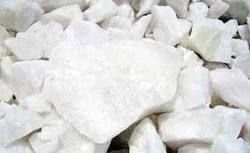
Silica Quartz
Quartz is the second-most-abundant mineral in Earth's continental crust, after feldspar. Its crystal structure is a continuous framework of SiO4 silicon- oxygentetrahedra, with each oxygen being shared between two tetrahedra, giving an overall chemical formula of SiO2.Pure quartz, traditionally called rock crystal or clear quartz, is colorless and transparent or translucent, and has often been used for hardstone carvings, such as theLothair Crystal. Common colored varieties include citrine, rose quartz, amethyst, smoky quartz, milky quartz, and others. USES OF QUARTZ GLASSESQuartz sand is the major ingredient in virtually all types of glass. Theprincipal glass products include containers (bottles and jars), flatglass (windows, mirrors), lighting glass (light bulbs, flourescent tubes),TV tubes and screens, decorative glass, fiberglass.FOUNDRY CASTING Quartz sand is used for the preparation of: the form blends fromcast-iron, steels and nonferrous foundires, abrasive cleaning ofcastings surfaces, as raw material for obtaining peliculizat sand.FILTRATION Being the principal filtration environment in the water industry the silicasand is used-up in water filtration stations, water wells or to preventcrumbling.CERAMICS Quartz sand that has been ground to fine size is an ingredient of mostclay bodies and is a major constituent of ceramic glazes. Typicaleveryday products include tableware, sanitary ware, ornaments andwall and floor tiles.CONSTRUCTION INDUSTRY The construction industry is founded on quartz sand and there are a host of specialist applications including silica and aerated concreteblocks, floor and roof tiles, flooring and rendering compounds, whitemarkings, roofing felt and cement.OTHER USE Silica has many other applications including the manufacture of chemicals and metals, fillers in numerous products, plastic, the manufacture of refractories, stimulating oil production.
...more
Senna Leaves
Senna is an herb. The leaves and the fruit of the plant are used to make medicine. Senna is an FDA-approved nonprescription laxative. It is used to treat constipation and also to clear the bowel before diagnostic tests such as colonoscopy. Senna is an herb. The leaves and the fruit of the plant are used to make medicine.Senna is an FDA-approved nonprescription laxative. It is used to treat constipation and also to clear the bowel before diagnostic tests such as colonoscopy.Senna is also used for irritable bowel syndrome (IBS), hemorrhoids, and weight loss.Senna fruit seems to be gentler than senna leaf. This has led the American Herbal Products Association (AHPA) to warn against long-term use of senna leaf, but not senna fruit. The AHPA recommends that senna leaf products be labeled, "Do not use this product if you have abdominal pain or diarrhea. Consult a healthcare provider prior to use if you are pregnant or nursing. Discontinue use in the event of diarrhea or watery stools. Do not exceed recommended dose. Not for long-term use.”
...more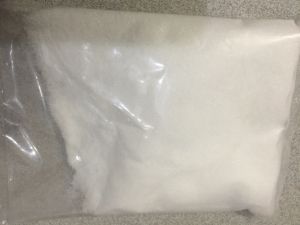
Salt
As the leading firm in the concerned field, we offer a quality grade of Iodized Salt. The provided salt is precisely processed using the optimum quality chemical compounds and sophisticated techniques under the guidance of our vendors' dexterous professionals. The salt offered by us is extensively used to prevent iodine deficiency. Moreover, this salt can be availed by our valuable patrons from us at industry leading prices.
...more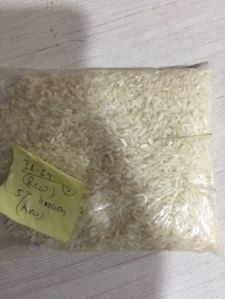
1121 White Sella Rice
Backed by our flourishing business processes, we are able to provide a superior quality grade of Long Grain Rice. The rice provided by us is well-processed under the supervision of our vendors' skilled professionals. Furthermore, our provided rice is used in the homes, hotels, restaurants and other places. Also, to ensure its purity and long size, the offered rice is thoroughly examined against different quality parameters by the quality analysts.Features: High level of purity Free from harmful preservatives Rich aroma Our company has relentlessly pursued excellence in its endeavor by providing premium quality Long Grain Rice. Our vendors' adroit professionals make use of ultra modern techniques and machines for the processing of this rice. The provided rice is extensively used to prepare diverse delicious dishes and cuisines. In order to ensure quality, this rice is tested against different quality parameters. In tune with set quality standard, we offer this rice in various packaging options.Features: Hygienically processed Air tight packaging Excellent taste
...more
Quartz Lumps
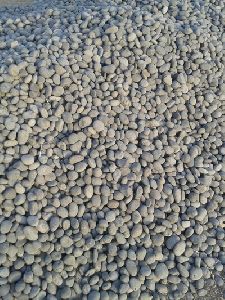
River Pebbles
We offer a wide range of Decorative River Pebbles like Sea Glass Pebbles, Beach Glass Pebbles, Crushed Glass, Aggregates, Polished Pebbles, Pebble Tiles, Seaside Pebbles, Flint Pebbles & Garden Artifacts are widely used in various industries for its smooth edges, fine finish, and low maintenance costs. In our product range, we can offer Large Size, Medium Size, Mixed Size, Decorative, Polished, and Colored Pebbles. Our variety includes Colored & White Flint Pebbles and Colored, Polished & Decorative River Pebbles. We also take pride in being one of the trusted and reputed suppliers of Silica Balls, which is also known as Hand Sorted Flint Pebbles. These are extensively used as Grinding Media in Ceramic Industries for both wet and dry grinding. In addition to these, our offered range of Natural River Pebbles
...more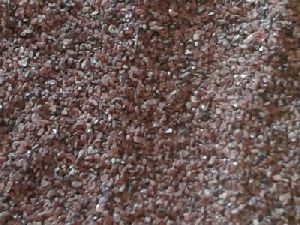
Garnet Sand
Garnet abrasive is composed of natural Almandite garnet grains that are known for their natural hardness, durability and abrasive characteristic. It is cost effective alternative to silica sand, mineral slags and steel grits and shot as the perfect symbiosis of grain size, density and hard and hardness/durability creates the optimum abrasive efficiency. USES OF GARNET 1.Garnet for Sand blasting:—Almandine Garnet grains are the most adaptable natural blasting and cutting mediums offered in the international market today. Its intrinsic physical and chemical uniformity ensures superior performance. Garnet is steadily superseding other blasting media because it is environment friendly and reusable.The brand performs superlatively for surface preparation in the following applications: Oil & Petroleum industry maintenance, refineries, oil wells etc. Shipbuilding, repair yards, shipyards for blasting. Bridges, rail tanks, new buildings. Denim Blasting. It is utilized for stone washing of denim fabrics, offering only the fading of dye without damaging the cloth or stitching 2. Garnet for Water Jet Cutting:— Grade #80 / # 120 are perfectly suitable for the Waterjet cutting Media in the Industrial purpose. Uniformity in grain size & shape give excellent performance for the users. It is perfectly suitable for the applications given below.Carbon Steel Stainless Steel Marble Ceramics Road Painting3.Garnet for Water Filtration:—Garnet is possibly the most cost effective alternative for water filtration beds as it resets the filter bed more rapidly after the bed is back-flushed. Moreover, it is also effective for the elimination of heavy minerals. Furthermore it has the benefit of being chemically inert, recycle in resulting in longer production to Water treatment medium.4. Garnet for Abrasive Paper:—Abrasive grains are highly useful for coated abrasive which in turn are used for coating of metal, wood & other coated purpose. Abrasive Paper made out of abrasive grains are mainly used for the surface preparation application for painting and removing of the corrosion particles, which gives new life to surface preparation.
...more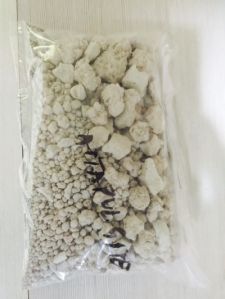
Fullers Earth
a) Attapulgite is a naturally mined clay. It is a needle-like clay mineral composed of magnesium-aluminum silicate. Major deposits occur naturally in Georgia, USA. Attapulgite and sepiolite have similar structures and both can be used in salt-water mud to provide low-shear rate viscosity for lifting cuttings out of the annulus and for barite suspension. Attapulgite and sepiolite are sometimes called "salt gel." Attapulgite has no capability to control the filtration properties of the mud. For use as an oil-mud additive, the clay is coated with quaternary amine, which makes it oil-dispersible and provides gel structure but does not improve the filter cake, unlike organophilic bentonite clay.b) Attapulgite is a kind of crystalloid hydrous magnesium-aluminum silicate mineral, having a special laminated chain structure in which there is a crystalline lattice displacement existed. Thus it makes the crystals contain uncertain quantities of Na+, Ca+, Fe3+ and Al, and present in the shape of needles, fibers or fibrous clusters. Attapulgite has very good colloidal properties such as: specific features in dispersion, high temperature endurance, salt and alkali resistance, and also high adsorbing and de-coloring capabilities. Furthermore, attapulgite has certain plastic and adhesive characters. Its ideal molecular formula is: Mg5Si8O20(HO)2(OH2)4•4H2Oc) The attapulgite structure is somewhat between laminated and chain structure. Attapulgite looks like soil, and compact blocks which are found in the sedimentary rocks and the weathering crust. Attapulgite are white, hoar, caesious or celadon, or with some dim mercerization in color. The clay of attapulgite is fine and a bit greasy smooth, light in weight, crispy, and the fractured surface is like shells or in irregular shapes. Attapulgite has strong ability to absorb water. When it is wet, attapulgite shows plastic and adhesive properties; and when it gets dry, attapulgite does not shrink much and does not show cracks. When it is soaked in water, attapulgite collapses. The suspending liquid does not create soliquids and precipitates, when meeting electrolytes.
...more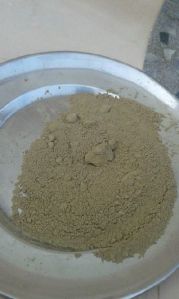
Fly Ash
Fly ash, also known as "pulverised fuel ash" in the United Kingdom, is one of the residues generated by coal combustion, and is composed of the fine particles that are driven out of the boiler with the flue gases. Ash that falls in the bottom of the boiler is called bottom ash . Fly ash is generally captured by electrostatic precipitators or other particle filtration equipment before the flue gases reach the chimneys of coal fired power plants, and together with bottom ash removed from the bottom of the boiler is known as coal ash. Depending upon the source and makeup of the coal being burned, the components of fly ash vary considerably, but all fly ash includes substantial amounts of silicon dioxide (SiO2) ( bothamorphous and crystalline),aluminium oxide (Al2O3) and calcium oxide (CaO), the main mineral compounds in coal-bearing rock strata.Chemical composition and classification Class F Fly Ash Class C Fly Ash USES OF FLY ASH fly ash reuse:1) Portland Cement2) Embankment3) Soil Stabilization4) Flowable Fill5) Asphalt concrete6) Geopolymers7) Roller compacted concrete8) Bricks9) Metal Matrix composites10) Waste treatment and stabilization11) As a catalyst
...more
Feldspar
Feldspar is the name given to a group of minerals distinguished by the presence of alumina and silica (SiO2) in their chemistry. This group includes aluminum silicates of soda, potassium, or lime. It is the single most abundant mineral group on Earth. They account for an estimated 60% of exposed rocks, as well as soils, clays, and other unconsolidated sediments, and are principal components in rock classification schemes. The minerals included in this group are the orthoclase, microcline and plagioclase feldspars.Mineral Classification: silicatesChemical Formula: KAlSi3O8 – NaAlSi3O8 – CaAl2Si2O8 Specific Gravity: 2.55-2.76MOHs Hardness: 6-6.5
...more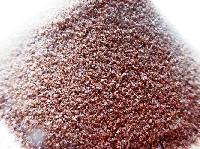
Emery Powder

Emery Grain
Synthetic Emery Grains And PowdersWe are reputed firm engaged in exporting of a qualitative range of Synthetic Emery Grains And Powders. (Emery powder, Emery grit) which is manufactured using high class bauxite these products are used in the production of stones, Anti skid flooring, Mill stones, Emery Papers, Abrasives and Blasting. These products are available at varied range of specifications and are mainly used in the construction industries. Our products are mostly available in the colour black. We offer these products at Competitive prices.
...more
Dolomite
dolomite is an anhydrous carbonate mineral composed of calcium magnesium carbonate, ideally camg(co3)2. The word dolomite is also used to describe the sedimentary carbonate rock, which is composed predominantly of the mineral dolomite.propertiesthe mineral dolomite crystallizes in the trigonal - rhombohedral system. It forms white, tan, gray, or pink crystals. Dolomite is a double carbonate, having an alternating structural arrangement of calcium and magnesium ions. It does not rapidly dissolve or effervesce (fizz) in dilute hydrochloric acid as calcite does. Crys tal twinning is common.solid solution exists between dolomite, the iron-dominant ankerite and the manganese-dominant kutnohorite. Small amounts of iron in the structure give the crystals a yellow to brown tint. Manganese substitutes in the structure also up to about three percent mno. A high manganese content gives the crystals a rosy pink color. Lead zinc, and cobalt also substitute in the structure for magnesium. The mineral dolomite is closely related to huntite mg3ca(co3)4.because dolomite can be dissolved by slightly acidic water, areas of dolomite are important as aquifers and contribute to karst terrain formation uses of dolomite dolomite is used as an ornamental stone, a concrete aggregate, and a source of magnesium oxide, as well as in the pidgeon process for the production of magnesium.dolomite is also used as the substrate in marine (saltwater) aquariums to help buffer changes in ph of the water.in horticulture, dolomite and dolomitie limestone are added to soils and soil less potting mixes as a ph buffer and as a magnesium source.dolomite is used in the ceramic industry and in studio pottery as a glaze ingredient, contributing magnesium and calcium as glass melt fluxes.
...more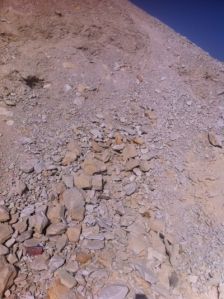
DIATOMACIOUS EARTH
Diatomaceous earth is made from the fossilized remains of tiny, aquatic organisms called diatoms. Their skeletons are made of a natural substance called silica. Over a long period of time, diatoms accumulated in the sediment of rivers, streams, lakes, and oceans. Today, silica deposits are mined from these areas.Silica is very common in nature and makes up 26% of the earth's crust by weight. Various forms of silica include sand, emerald, quartz, feldspar, mica, clay, asbestos, and glass. Silicon, a component of silica, does not exist naturally in its pure form. It usually reacts with oxygen and water to form silicon dioxide. Silicon dioxide has two naturally occurring forms: crystalline and amorphous. Most diatomaceous earth is made of amorphous silicon dioxide. However, it can contain very low levels of crystalline silicon dioxide. The first pesticide products containing silicon dioxide (diatomaceous earth) were registered in 1960 to kill insects and mites.
...more
China Clay
one of the purest of the clays, composed chiefly of the mineral kaolinite usually formed when granite is changed by hydrothermal metamorphism. Usage of the terms china clay and kaolin is not well defined; sometimes they are used synonymously for a group of similar clays,china clays have long been used in the ceramic industry, especially in fine porcelains, because they can be easily molded, have a fine texture, and are white when fired. France's clays are made into the famous sèvres (see a. Brongniart ) and limoges potteries. These clays are also used as a filler in making paper. In the united states, deposits are found primarily in georgia, north carolina, and pennsylvania; china clay is also mined in england (cornwall) and france. uses of china clay china clay in ceramic manufacture, porcelain; bone china; earthenware; white tile body; graniteware; white stoneware; glazes.paper manufacturing miscellaneous, paint; plaster; alum; ultramarine; whitewash; drugs; soap and face powder; wine clarification; polishing powders; lead pencils.paper and board, coating clays; fillers; brush coating clays; machine coating clays.rubberpaint and distemperleathercosmetics, insecticides, dusting and medicinaltextileslinoleumwhite cementultramarineplastics
...more
Ceramic Tiles
Our Parking tiles are Vitrified Parking Tiles 300 x300 mm.Thickness is 10 mm( approx) and average weight per box is 14.5 kg.There are 08 tiles in one Box covering 0.72 sq.mt. per box.
...more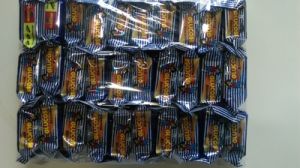
Biscuits
Let your child allow to taste the Biscuits without giving a next thought about their tooth aches and cavity problems. We are offering, ever tasted Cream Biscuits, which are deprived from any sugar substance and made with rich flavored cream like Strawberry, Mango, Banana, Chocolates and many more. We made them in many Fruit Creams, which provide proper nutrition to the kids. The delicious taste of these cream biscuits is actually adhere by the kids on a large scale.
...more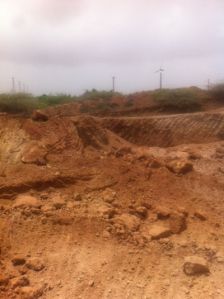
Bauxite Ore
Bauxite, an aluminum ore, is the world's main source of aluminum. It consists mostly of the minerals gibbsite Al(OH)3, boehmite γ-AlO(OH) and diaspora α-AlO(OH), mixed with the two iron oxides goethite and haematite, the clay mineral kaolinite and small amounts of anatase TiO2, Ilmenite, FeTiO3, and FeO TiO2.
...more
Barite
Barite is the primary, naturally occurring, barium-based mineral. Barium, atomic number 56, derives its name from Greek and means heavy. Barite is also known as baryte, and in Missouri is known as "tiff”. The primary countries in which commercial deposits of barite are currently found are the United States, China, India and Morocco. Barite’s high density and chemical inertness make it an ideal mineral for many applications.The chemical formula for barite is BaSO4. It has a high specific gravity of 4.50 g/cm3. Its Mohs hardness is 3.0 to 3.5. Barite, which may be found in a variety of colors including yellow, brown, white, blue, gray, or even colorless, typically has a vitreous to pearly luster. USES OF BARITE Drilling Industry: The overwhelming majority of the barite that is mined is used by the petroleum industry as a weighting material in the formulation of drilling mud. Barite increases the hydrostatic pressure of the drilling mud allowing it to compensate for high-pressure zones experienced during drilling. The softness of the mineral also prevents it from damaging drilling tools during drilling and enables it to serve as a lubricant. The American Petroleum Institute (API) has established specifications for the use of barite in drilling mud.Medical Industry: An application where many people have heard of barite is within the medical field. A high-purity form of barite is used in the gastrointestinal tract where its density prevents x-ray penetration, and thus is visible on an x-ray. The outline of the gastrointestinal tract thus becomes visible allowing the determination of normal and abnormal anatomy.Other Uses: Barite is also used in a wide variety of other applications including plastics, clutch pads, rubber mudflaps, mold release compounds, radiation shielding, television and computer monitors, sound-deadening material in automobiles, traffic cones, brake linings, paint and golf balls.
...more
Anthracite
lack coal, hard coal, stone coal, blind coal, Kilkenny coal, crow coal, craw coal, black diamond Metamorphic rockAnthracite coalCompositionCarbon, 92–98%Anthracite, often referred to as hard coal, is a hard, compact variety of coal that has a submetallic luster. It has the highest carbon content, the fewest impurities, and the highest energy density of all types of coal and is the highest rankingof coal.Anthracite is the most metamorphosed type of coal (but still represents low-grade metamorphism), in which the carbon content is between 92% and 98%. The term is applied to those varieties of coal which do not give off tarry or other hydrocarbon vapours when heated below their point of ignition. Anthracite ignites with difficulty and burns with a short, blue, and smokeless flame.Anthracite is categorized into standard grade, which is used mainly in power generation, and high grade (HG) and ultra high grade (UHG), the principal uses of which are in the metallurgy sector. Anthracite accounts for about 1% of global coal reserves,and is mined in only a few countries around the world.
...more
adventure sports

Adventure Tours
Be first to Rate
Rate ThisOpening Hours